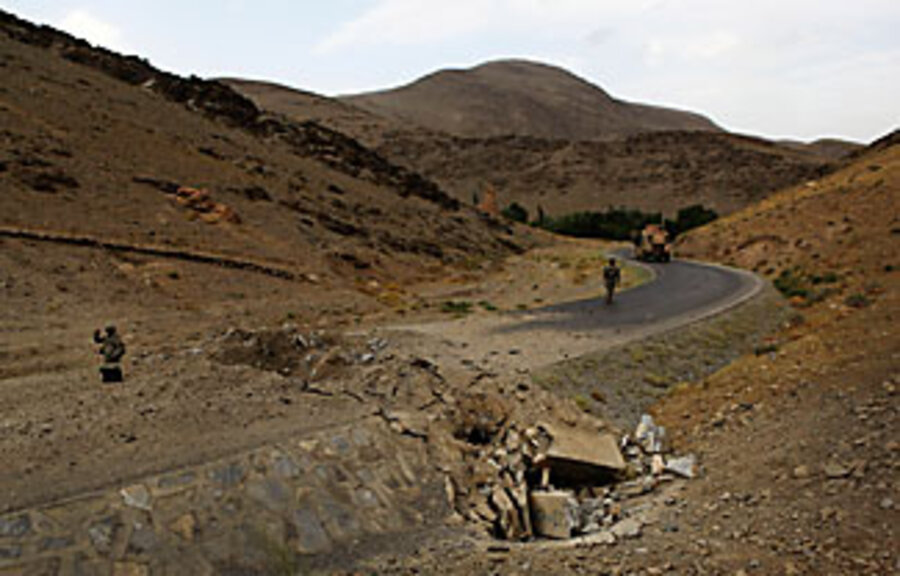Pentagon's urgent bid to counter Afghan roadside bombs
| Washington
The US military is responding to the dramatic rise of roadside bomb attacks in Afghanistan by significantly stepping up its efforts to combat the No. 1 killer of American troops in the war.
It is sending thousands of new bomb-resistant trucks there, increasing by 50 percent the number of explosive ordnance disposal experts, and importing "lessons learned" from the war in Iraq to counter improvised explosive devices (IEDs) in Afghanistan.
The effort is not expected to weaken "counter-IED" capability in Iraq. That will stay put for now, with the military increasing its efforts in Afghanistan.
The size of this increase will likely be tied to the recommendations that Gen. Stanley McChrystal, the new commander of US forces in Afghanistan, is expected to make next week, says a senior officer in Kabul who is familiar with the assessment. McChrystal will want counter-IED resources to match any increase in troops that he might receive, says the source, who spoke on condition of anonymity because the review has not yet been finalized.
The cold metrics of troop deaths show the need is dire.
In July 2007, there were 230 IED "incidents" in Afghanistan – the Pentagon's terminology for roadside bombs that were detonated or detected. These killed 12 members of coalition forces. Last month, there were 828 incidents that killed 49 members of coalition forces, according to the Joint IED Defeat Organization, an arm of the Pentagon.
In Iraq, by contrast, there were 170 incidents last month, down from the 2,137 reported in July 2007, according to the organization.
As a result of the shift in violence, the military is beefing up a counter-IED unit known as Joint Task Force Paladin at Bagram Air Base in Afghanistan. The number of explosive ordnance disposal teams at its disposal will increase by half, says Rear Adm. Michael Tillotson, deputy director of operations at US Central Command in Tampa, Fla.
The roadside bombs the military is seeing in Afghanistan are generally cruder than the ones in Iraq, often using plywood and basic wire. Yet US forces are keeping a watchful eye for the sorts of IEDs seen in Iraq, assuming that these more sophisticated techniques will come to Afghanistan sooner or later. "We know there is an enemy network using 'lessons learned,' " says Tillotson.
The military is also sending thousands of new bomb-resistant trucks, known as Mine Resistant, Ambush Protected trucks (MRAPs), which are similar to the ones used in Iraq. There are about 3,500 MRAPs on the ground in Afghanistan now, a small portion of which were actually shipped from Iraq.
But Afghanistan's poor roads and mountainous terrain demand a new kind of bomb-resistant truck. This month, the first 47 of the trucks rolled off the US-based assembly line. They should be on their way to Afghanistan after getting tested and fitted with special gear – a process that should take about a month.
The Pentagon had initially planned to buy about 2,000 of the Afghanistan MRAPs, known as Mine Resistant, Ambush Protected, All-Terrain Vehicles, or M-ATVs. But it has recently upped the buy. By December, military officials expect to begin shipping 500 of the new vehicles to Afghanistan each month. By spring, they will have sent all 5,000 of the vehicles, in time for the heavier fighting season there.
That's on top of the 3,500 already there, said the military.
The military official says the Pentagon is also eyeing a new truck to clear roads of bombs before troops use the road. The new vehicle would be more suitable for the terrain in Afghanistan.





